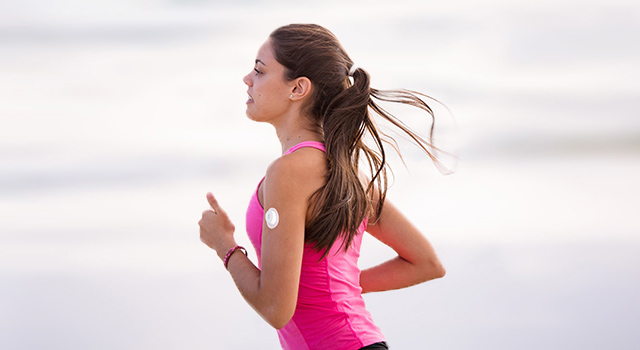Introduction
Physical activity is essential for diabetics to maintain their general health and manage their blood sugar levels. Managing insulin doses and blood sugar levels during exercise, on the other hand, can be difficult. Continuous Glucose Monitoring (CGM) devices have developed as useful tools for assisting persons in making educated decisions about insulin changes and overall diabetes care while participating in strenuous activities. This tutorial attempts to provide insight into how to use CGM data efficiently to optimize exercise and physical activity while maintaining stable blood sugar levels.
Understanding Physical Activity’s Role in Diabetes Management
Regular physical activity has various advantages for those with diabetes. It boosts insulin sensitivity, aids in weight loss, improves cardiovascular health, and contributes to general well-being. The effect of exercise on blood sugar levels, however, varies depending on factors such as activity type, intensity, and duration, as well as an individual’s current blood sugar level, insulin regimen, and overall health.
Blood Sugar Management Difficulties During Physical Activity
The body’s demand for energy increases during activity, which might result in a dip in blood sugar levels. Some high-intensity exercises, on the other hand, can cause the release of stress hormones, resulting in a transient spike in blood sugar levels. Balancing these variations necessitates careful planning, monitoring, and possible insulin dose modifications.
The Function of Continuous Glucose Monitoring (CGM)
CGM devices provide real-time insights into a person’s blood sugar trends, enabling for proactive diabetes care. These devices record blood sugar levels at regular intervals, allowing users to spot patterns, trends, and potential concerns. This information is helpful when deciding on insulin dosages, food, and physical activity regimens. Fill out the form here to check whether you or a friend qualify for a CGM.
Exercise and Physical Activity Optimization Using CGM Data
Preparation for Exercise:
Before beginning any physical activity, review your CGM readings. If your blood sugar levels are too high or too low, you may need to postpone exercise until they normalize.
If your blood sugar levels are within a healthy range but on the low side, consider eating a small snack before exercising to avoid hypoglycemia.
Selecting the Appropriate Activity:
Blood sugar levels are affected differently by different activities. Low-intensity activities such as strolling or yoga may have a softer impact, whereas high-intensity sports such as running or HIIT may induce fast fluctuations.
Examine your CGM data to learn how various activities affect your blood sugar levels. This will assist you in selecting exercises that are in line with your goals and diabetes control plan.
Must Read About CGM Tips For Traveling
Observation During Exercise: Wear your CGM device while exercising to detect changes in blood sugar levels in real-time. In case of unexpected hypoglycemia, keep glucose pills or a quick-acting source of sugar accessible.
CGM Data Interpretation: Check your CGM data on a regular basis to spot trends during exercise. Throughout the activity, strive to keep your blood sugar levels steady. If your blood sugar drops quickly, consider lowering your insulin dose before beginning the activity.
Post-Exercise Evaluation: Examine your CGM data again after exercise to see how your body reacts. If your blood sugar levels fall during the activity, you may need to change your post-workout meal or insulin dosage.
Read Guide about Wegovy Dosage Guide: The Best Way For Weight Loss
Changing Insulin Dosages: CGM data can help you make educated decisions about insulin changes. If you routinely have hypoglycemia during or after exercise, talk to your doctor about changing your basal or bolus insulin doses.
Keeping Hydrated: Blood sugar levels can be affected by dehydration. To stay hydrated, drink plenty of water before, during, and after exercise.
Long-Term Evaluation: Analyze your CGM’s historical data over time to uncover patterns in your blood sugar reactions to different exercises. This long-term outlook might help you fine-tune your diabetes treatment plan for physical activity.
Conclusion
Using CGM data to maximize exercise and physical activity in people with diabetes allows them to make proactive and educated decisions about insulin dosages and lifestyle choices. Individuals can reduce their risk of hypoglycemia and hyperglycemia before and after exercise by constantly monitoring blood sugar changes and patterns. Remember that diabetes management is unique, so collaborate with your healthcare team to establish a personalized strategy that corresponds with your objectives and overall well-being. With CGM technology as a trustworthy companion, you may live an active lifestyle while efficiently controlling your diabetes.


